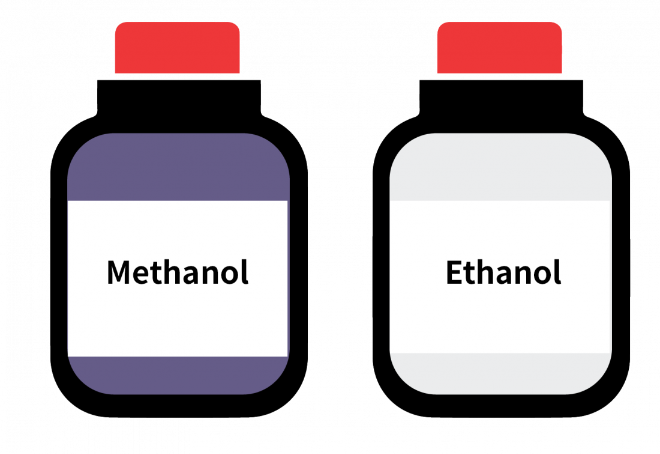Understanding the Dangers of Methanol Poisoning (GS Paper 2, Health)

Introduction
- At least 38 people tragically lost their lives after consuming spurious liquor in the Kallakurichi district of Tamil Nadu.
- Additionally, as many as 82 others were receiving treatment in hospitals. This incident sheds light on the dangers of methanol poisoning and the devastating effects it can have on individuals.
Alcohol in Liquor
- Liquor is differentiated by its alcohol content, ranging from the 5% of beer to the 12% of wine to the 40% of distilled spirits.
- In recreational beverages, the alcohol is almost always ethanol. Despite its widespread use, the World Health Organization has found that no level of ethanol consumption is safe for health.
- Long-term use can lead to dependence and increase the risk of cancers and heart disease.
What is Ethanol
- Ethanol (C2H5OH) is a psychoactive drug that, in low doses, reduces neurotransmission in the body, leading to intoxication.
- Metabolized in the liver and stomach, ethanol is converted to acetaldehyde and then to acetate.
- The adverse effects of alcohol consumption, from hangovers to cancer, are due to acetaldehyde.
What is Spurious Liquor
- Spurious liquor contains methanol, which makes it dangerous.
- Often homemade, spurious liquor may contain added methanol to enhance intoxicating effects or increase volume. Regulations stipulate the maximum permissible quantity of methanol in different liquors.
What is Methanol
- Methanol (CH3OH) is a toxic substance.
- Produced by combining carbon monoxide and hydrogen in the presence of catalysts, methanol has several industrial applications, including as a precursor to acetic acid and formaldehyde.
How Does Spurious Liquor Kill
- The deadliness of spurious liquor arises from methanol. Metabolized into formaldehyde and then formic acid in the liver, methanol leads to metabolic acidosis, causing the blood pH to drop and become increasingly acidic.
- Formic acid also interferes with enzymes, disrupting cells' ability to use oxygen and leading to serious health issues, including blindness and death.
Treatment
- Treatment for methanol poisoning involves administering pharmaceutical-grade ethanol or an antidote called fomepizole.
- Both substances compete with methanol for the same enzymes in the body, slowing down its conversion into toxic byproducts. Other treatments may include dialysis and the administration of folinic acid.
Conclusion
- Governments can combat spurious alcohol by enforcing strict regulations, conducting regular inspections, raising public awareness, strengthening law enforcement, collaborating with industry, using technology for monitoring, and fostering international cooperation.
- Understanding the dangers of methanol poisoning is crucial for preventing such tragic incidents in the future.


